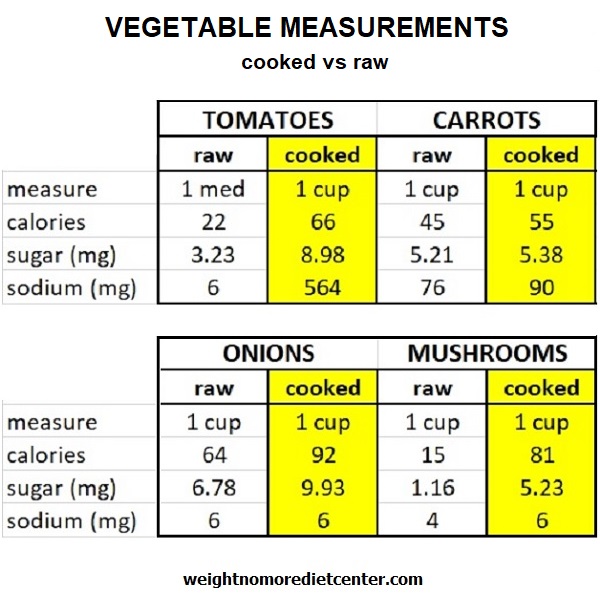Vegetable Measurements
Weight★No★More℠ Diet Center
I’m often asked why the measurements for one serving of vegetables is either 1/2 cup cooked or 1 cup raw. This is known as a “common measure,” used by the USDA National Nutrient Database for Standard Reference.
The result of cooking is that we can eat much more of a cooked vegetable than if it was in its raw state. For example, if you took a full cup of broccoli and steamed, sauteed or grilled it, it would shrink and, in essence, you could throw a few more pieces in the same cup to fill it, thereby adding more calories, sugar, and sodium.
An additional result of cooking any food is that the structure of that food changes from its raw state, sometimes robbing it of vital nutrients, sometimes bringing it to a more gelatinous (or starch) state. So, for example, while 1 medium size raw tomato is 22 calories, 3.23 grams of sugar and only 6 mg. of sodium, if you were to fill 1 cup with canned or stewed tomatoes, the calories would change to 66, the sugar would increase to 8.98 mg., and the sodium ups to a whopping 564 mg.
The graphic — using tomatoes, carrots, onions, and mushrooms because they’re very common examples of veggies that we eat both raw and cooked — shows you what I mean.



